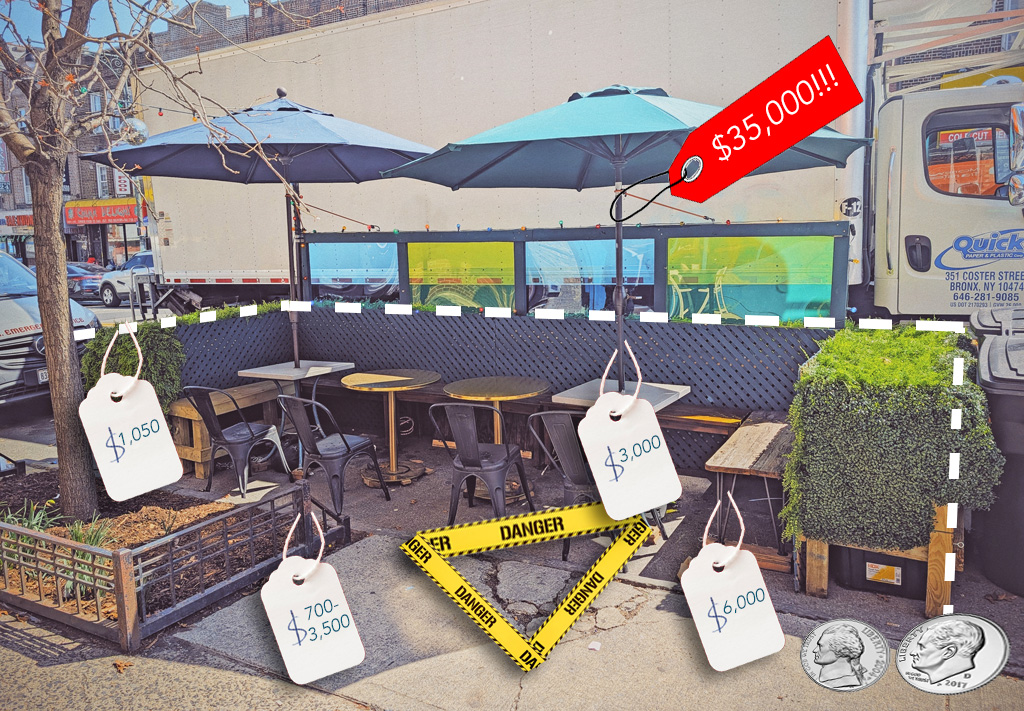Speaking at NYPD headquarters this afternoon, Mayor de Blasio said the placement of concrete barriers on the Hudson River Greenway in response to Tuesday's truck attack needs to change.
"I think what was originally put in just in the last day or so needs some revision to make sure people can still ride their bikes," the mayor said. "Obviously we want safety and security, but we also want people to be able to go on about their lives, and enjoy their lives. That’s another part of showing our enemies they cannot win."
Yesterday, state DOT laid down obtrusive jersey barriers at 31 car crossings along the greenway. They were placed at angles cutting across the path, creating narrow pinch points that reduced the width of the greenway to just a few feet. On a path used by thousands of people every day, the barriers generate bottlenecks and increase the risk of head-on collisions. (NYPD also put down concrete cubes at crosswalk entry points to the greenway, which are blocky but less disruptive.)
In response to complaints today, state DOT told Daily News reporter Dan Rivoli that it instructed contractors to walk the length of the greenway and straighten out diagonally-placed barriers. Some readers report that they've seen crews re-oriented the barriers this afternoon.
The jersey barriers are still bulkier and more obtrusive than the steel bollards that advocates have asked for. In a statement to Streetsblog, NYS DOT Chief of Staff Cathy Calhoun said the barriers are a "short term solution."
"DOT is moving forward expeditiously to develop a permanent solution that will enhance security while allowing emergency vehicles to do their jobs," she said. However, there's still no specific timetable to replace the barriers.
At the press conference at 1 Police Plaza, the mayor was also asked about whether the city was considering barring motor vehicles from Central Park. He declined to comment, but NYPD Commissioner James O'Neill said a car-free park is "something that we're taking a look at it."
Transportation Alternatives called for steel bollards at street and driveway crossings along the greenway 10 years ago. O'Neill refused to say whether bollards should have been installed on the route before Tuesday's attack.
"New York City is a big place, you know, and we do look, our counterterrorism bureau, along with DOT, we look at places where there are a tremendous amount of pedestrians. We also look at bicycle traffic too," he said. "I’m not going to say what should have been there or what should not have been there."






